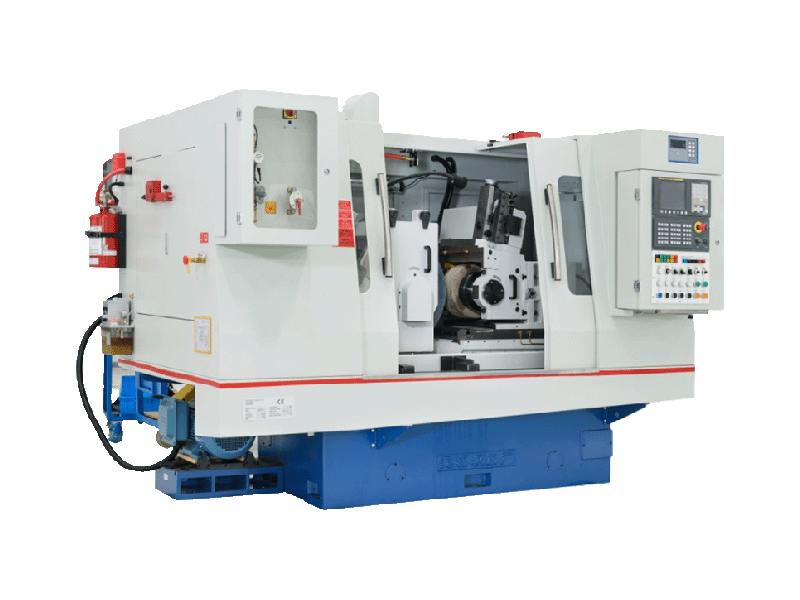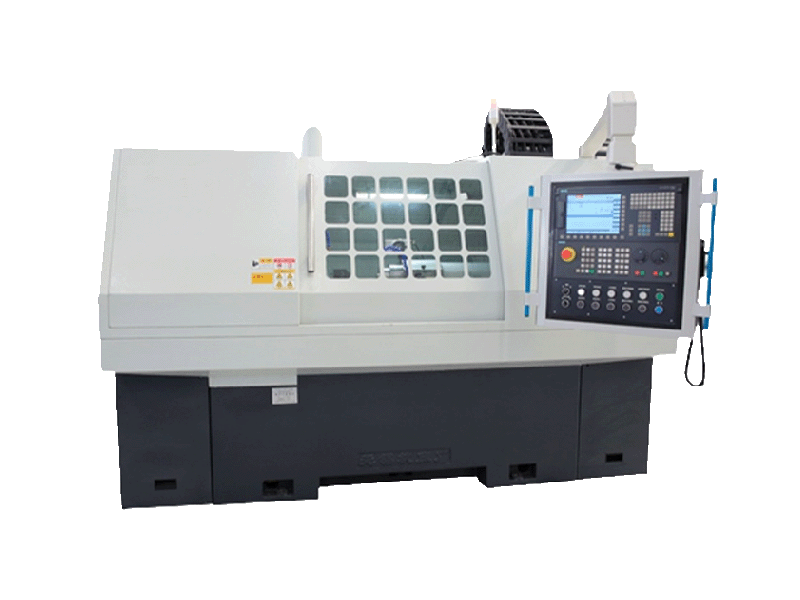Common grinding defects and solutions
Release time:
Mar 28,2025
Common Grinding Defects and Their Elimination Methods——WUXI RUIEN TECHNOLOGY CO.,LTD
1.Pay attention to the contact condition between abrasive wheel and work piece during grinding process
When the workpiece surface contacts with the abrasive wheel, you may hear the continuous fizzle sound. The water mark on the workpiece surface can be brought away by the abrasive wheel and weak spark can be seen. Then you may increase the cooling liquid with a little higher liquid concentration compared with the soap used by common grinding. The feed rate each time is double-stroke 0.005mm. Grinding continues until there’s not spark. At this time, hold the horizontal feed hand wheel to the feed direction to make the abrasive wheel slightly advance towards the workpiece without feed , i.e. which equals to one-time polishing of the workpiece in order to ensure the surface roughness of the workpiece.

2.Surface galling of the workpiece
It is caused by unclean cooling liquid or floating sand on the surface of abrasive wheel. Please strictly filter the cooling liquid or brush away the floating sand.
3.Prevent workpiece expansion
When grinding in summer, the light shall not be close to the workpiece in order to prevent heat radiation of the light which may lead to workpiece expansion and influence the grinding quality.
4.Partial ripple on the workpiece surface
After processing, most part of the workpiece is good, but partial fine ripple exists. It may be caused by spindle looseness, motor vibration or other reasons. Adopt relevant measures to solve the problem based on practical condition.
5.Partial burn
It is caused by insufficient cooling liquid, too large feed rate or blunt of the abrasive wheel
6.Grinding heat and grinding temperature
Most energy of the "rubbing" and "ploughing" during grinding process and about half of the cutting energy will be transferred into the thermal energy which is sent into the workpiece. Therefore the heat to the abrasive wheel and surrounding medium is relatively low. It is because of poor thermal conductivity of the abrasive wheel, short contract time and contact arc between the abrasive wheel and workpiece and because the cooling liquid is hard to enter the grinding area.
The grinding heat and the grinding temperature arising therefrom may lead to decreasing of size accuracy of the workpiece, processing surface quality decreasing and wearing of the abrasive wheel.
The temperature of the grinding point of the abrasive particles can reach about 1000℃, which is the temperature of the contact part between abrasive particle cutting edge and cuttings, and is also the highest temperature part in grinding and the heat source of grinding heat. It not only influences the surface quality, but also related with the wearing of abrasive particles and cuttings melting phenomenon.
Factors that influencing the grinding point temperature includes linear speed of the abrasive wheel Vabrasive wheel, linear speed of the workpiece V workpiece, radial feed rate S radial and axial feed rate S shaft. The influence degree is as follows: V workpiece has the highest influence, then is the Vabrasive wheel, S radial, S shaft. The material of the workpiece has high strength and hardness. The temperature of grinding point is high if the toughness is large

7.Measures to reduce the grinding temperature and prevent burn of the grinding surface
1)Select proper abrasive wheel. Choose abrasive material with larger brittleness and abrasive wheel with less hardness to increase the self-sharpening feature of the abrasive wheel in order to maintain good cutting force and reduce energy consumption during grinding process. Choose rougher particles as far as possible when ensuring the finish degree of the workpiece.
2)Perform abrasive wheel dressing timely and reasonably. If the dressing is too fine, it may easily cause surface burning; if the dressing is too rough, it may influence the finish degree of the workpiece. Therefore it is required to choose dressing amount of the abrasive wheel in a reasonable manner
8.Safe application and storage of the abrasive wheel
1)Please carefully inspect the appearance of the grinding tool before installation. Use wooden hammer to tap the abrasive wheel to see if there’s any crack and damage (the abrasive wheel may be damaged due to vibration or collision during transportation and handling process), the abrasive wheel cannot be used if no inspection is performed or breaking or raucous sound exists on the abrasive wheel.
2)The protective cover of the abrasive wheel shall comply with the strength requirements with reasonable installation position.
3)There shall be paper washer of 0.5~1mm on the two sides when the abrasive wheels are installed on the flange plate; the paper washer shall be clamped between the abrasive wheel and the flange plate which shall be 1~2mm stretched out from the outer diameter of the flange plate.
4)The clearance between the abrasive wheel hole and the flange plate shall be even. If the abrasive wheel is small, you may repair and scrap the abrasive wheel hole to make it large. It is strictly forbidden to press the abrasive wheel into the flange plate. If the abrasive wheel hole is large, you shall place paper washer evenly between the abrasive wheel hole and flange plate.
5)When fastening the grinding wheel, the screw shall not be over-fastened. Tighten the screws in a symmetrical manner and gradually increase the tightening force.
6)If the outer diameter of the abrasive wheel is over 125mm, static balancing is required. Then perform rounding on the machine tool and leveling of the two end faces. Unload it to perform static balancing again before use.
7)Clean the flange plate hole and spindle before install the grinding wheel on the machine tool
8)After being installed on the grinding tool for the first time, the new abrasive wheel shall be run with no-load for 5 minutes with the protective cover. At this time, the operator shall standard at side of the rotation direction of the abrasive wheel to prevent accidents.
9.Influence on the workpiece quality by abrasive wheel speed V abrasive wheel
1)Abrasive wheel speed V abrasive wheel
In general , the V abrasive wheel is about 35m/s (internal grinding, tooling grinding; the diameter of the abrasive wheel of the tool is small, therefore the speed of abrasive wheel can be a litter lower). If the speed of abrasive wheel is increased, the grinding particles passing through the unit working face can be increased, which may increase the finish degree of the grinding surface. Pay attention to the grinding vibration and burn of the workpiece surface after the abrasive wheel speed is increased.
2)Workpiece speed V Workpiece
The workpiece speed has relative small influence on the surface finish degree of the work piece. Choose higher V Workpiece (m/min) may reduce the light injury on the surface, but it also may influence multi-prismatic depth of the workpiece surface
Speed ratio q=V abrasive wheel /V Workpiece
In general, we choose external grinding: q=60~150 internal grinding :q=40~80
3)Speed of the working table S
The speed of working table S (m/min) will directly influence the surface quality and production rate of the work piece. If the speed of the working table increases, the cutting load of each particle on the abrasive wheel will increase as well as the grinding force and heat, which may increase the possibility of burn and other defects.
4)Spark-out grinding times
Spark-out grinding, i.e. the no radial feed grinding; during high finish degree grinding, the cutting function of micro-edge of fine dressing abrasive wheel of coarse particle size is relative strong, the allowance removing is fast and the grinding pressure reduction is relative fast, therefore the fraction polishing function cannot be realized and the spark-out grinding result is not obvious. After dressing of the fine particle size Graphite abrasive wheel, the micro-edge cutting function is relative weak and the allowance removal is slow which may maintain proper grinding pressure, therefore the fraction polishing function is obvious, the spark-out grinding result is good. At the same time the spark-out grinding may also improve the geometric precision of the workpiece.







